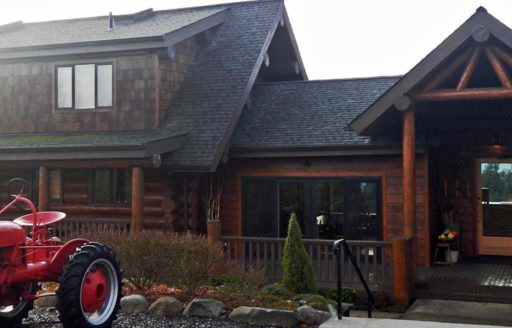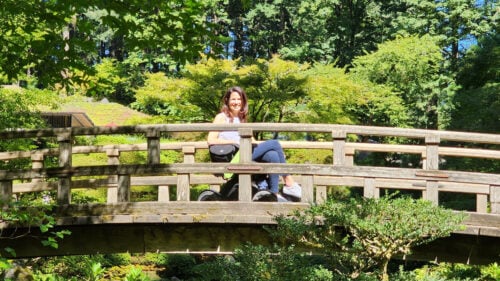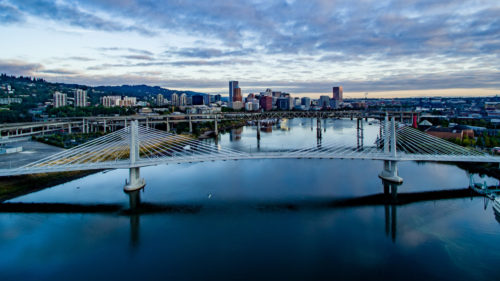Find our entire Accessible Road Trip series here: 1. Willamette Valley / 2. Central Oregon / 3. Portland Region / 4. Mt. Hood & Columbia River Gorge / 5. Southern Oregon / 6. Eastern Oregon / 7. Oregon Coast
Zahna Simon is a professional dancer and artist who has been Deaf since birth. She thrives on creative energy and personal expression, which made Portland the perfect destination for a trip in spring 2025.
“Communication isn’t just spoken or signed,” says Simon, who is also a chemist, accessibility consultant and advocate for the Deaf community. “It can be music, food or silence. It can be color, shape and motion. There’s a strong creative energy here in Portland. It’s alive in the art but also in the people. In the food, the flavors, the culture.”
During her trip, Simon visited a Deaf-owned cafe, gardens, wineries, restaurants, museums, bookshops and more. “It’s so meaningful to feel embraced in a new city,” she says. “When a space is accessible I feel seen, included and able to experience the world my way. That inclusion brings me joy. It communications with my spirit.”
Wheel the World is a travel platform that has partnered with Oregon and 43 of its communities, meaning a significant percentage of the state’s hotels, activities, transportation and restaurants have been reviewed and verified by accessible community travelers. These listings include detailed accessibility information and photos to help travelers plan their trip to Oregon with confidence.
In fact, Oregon is the first Accessibility Verified state in the U.S., and the Portland Region invites travelers of all mobilities to enjoy its world-famous cultural attractions, culinary scene and green spaces. Here’s how to take an accessible 2-day road trip around the Portland Region.
Day 1: Gardens, Wine Tasting and Award-Winning Restaurants
There’s an enthusiasm running through the Portland Region that drives people to do what they love, and do it well. Any trip should include a mix of classic attractions and newer destinations. One good place to start is in the heart of it all, Old Town Portland. Lan Su Chinese Garden is a peaceful oasis in the city with tranquil gardens, koi ponds, stunning architecture and special tours and activities like tai chi and tea ceremonies that reflect the rich history and traditions of China. Visitors can find smooth pavement, a step-free entrance and accessible restrooms. Find more beauty just a few miles west in Northwest Portland at the International Rose Test Garden.
Did you know that you can visit stunningly scenic vineyards less than an hour outside the Rose City? Oak Knoll Winery is one of many in Tualatin Valley, just west of Portland, that welcome visitors of all mobilities and palates. Order a flight, enjoy views of the surrounding Chehalem Mountains, visit during live music on the lawn and enjoy a personalized tasting without the crowds. Find accessible parking and restrooms, a step-free entrance and obstacle-free area.
When it’s time for dinner, choices abound. Portland is home to dozens of food-cart pods as well as elevated but approachable restaurants owned by James Beard Award-winning chefs like Cathy Whims’ Nostrana in Southeast Portland. The regional Italian restaurant, a mainstay in the city, serves beautiful pizzas and pastas that pair with a serious wine list are sourced with ingredients that reflect the local landscape. The restaurant features an accessible dining space, with step-free entrance, low dining tables and accessible restrooms.
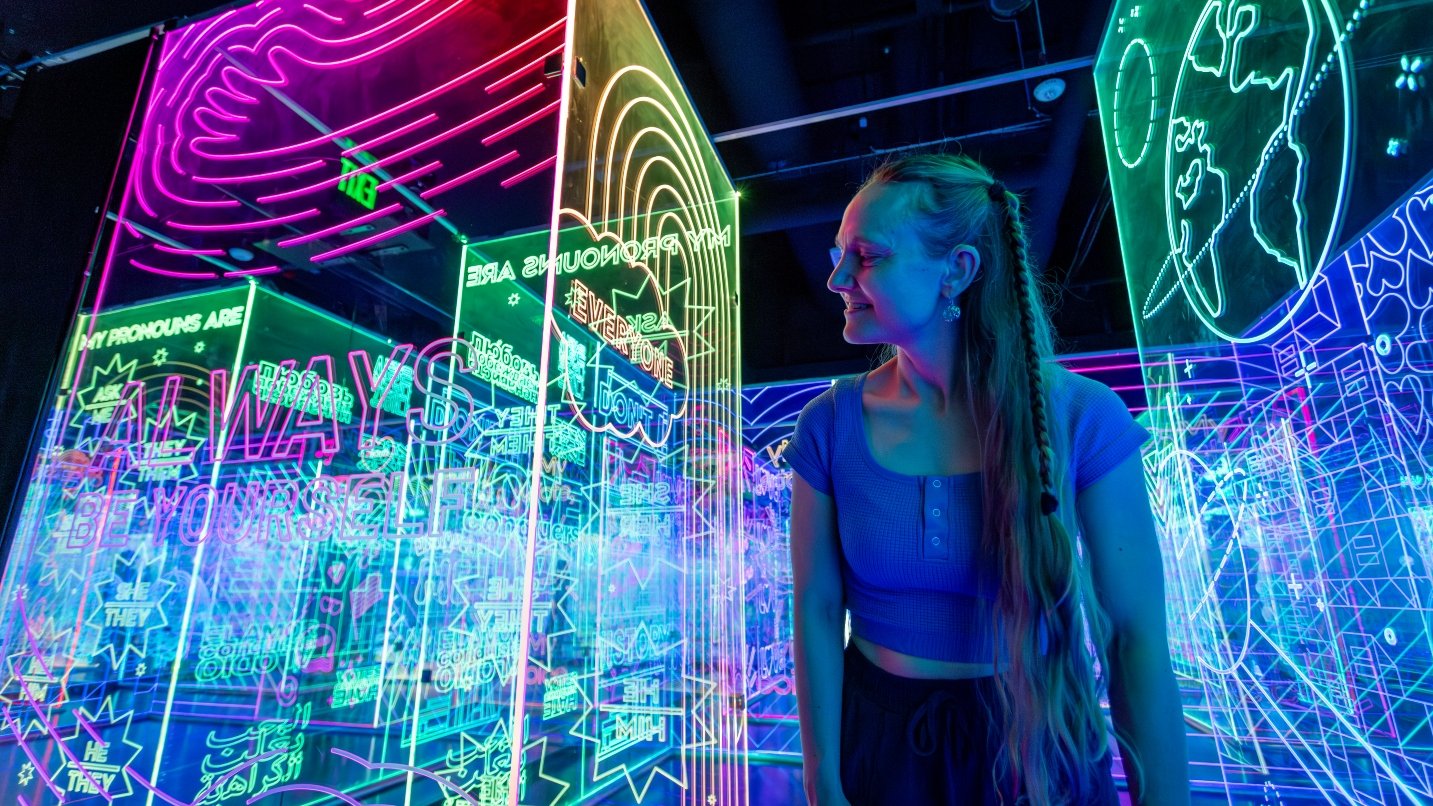
Day 2: Coffee, Art and the World’s Largest Bookstore
It’s not everyday you can order your coffee by sign language, but at Woodstock Cafe in Southeast Portland that’s encouraged. At this deaf-operated cafe the baristas are trained to use American Sign Language; they also run ASL game nights on the patio and serve up a hearty breakfast sandwich, as well as burgers and pastries. It’s not something you’ll find in every city, and was a welcome addition to Simon’s itinerary, where she appreciated conversing with others from her community.
A few miles north in inner Southeast Portland Hopscotch Portland is a delightful stop for all ages and all mobilities. The immersive art gallery features dozens of colorful and engaging exhibits, both temporary and permanent, so there’s always something new to see. There are ball pits, trampolines, walk-thru mazes and light shows — all very artful and purpose-driven. Pro tip: You’ll want to order some snacks from the playful food and beverage menu.
Time to unwind after lots of stimulation? The world’s largest independent bookstore, Powell’s City of Books, is just the place. The flagship Pearl District location, just a half mile north of downtown, covers an entire city block with its collection of new, used and out-of-print books. While finding accessible parking in the busy surrounding blocks can be a challenge, the smooth flooring, step-free entrance and accessible restroom make it friendly to all mobilities.
Along downtown’s South Park Blocks the Portland Art Museum is another stop for creative inspiration and reflection. This hub for art enthusiasts showcases a diverse range of exhibits — from Monet’s waterlilies to psychedelic rock — and welcomes visitors of all mobilities with a step-free entrances, easy views from wheelchairs and rest seating areas.
Dining in Portland doesn’t have to be a formal event. In fact most of the time it’s as laid-back as can be. Pine Street Market, downtown, is an indoor food hall with a number of elevated food offerings and a central seating area, so everyone in the group can get what they want. From authentic ramen to some of the world’s best pizza, the hall is a lovely slice of Portland that’s wheelchair-friendly with accessible restrooms, low dining tables and a step-free entrance.
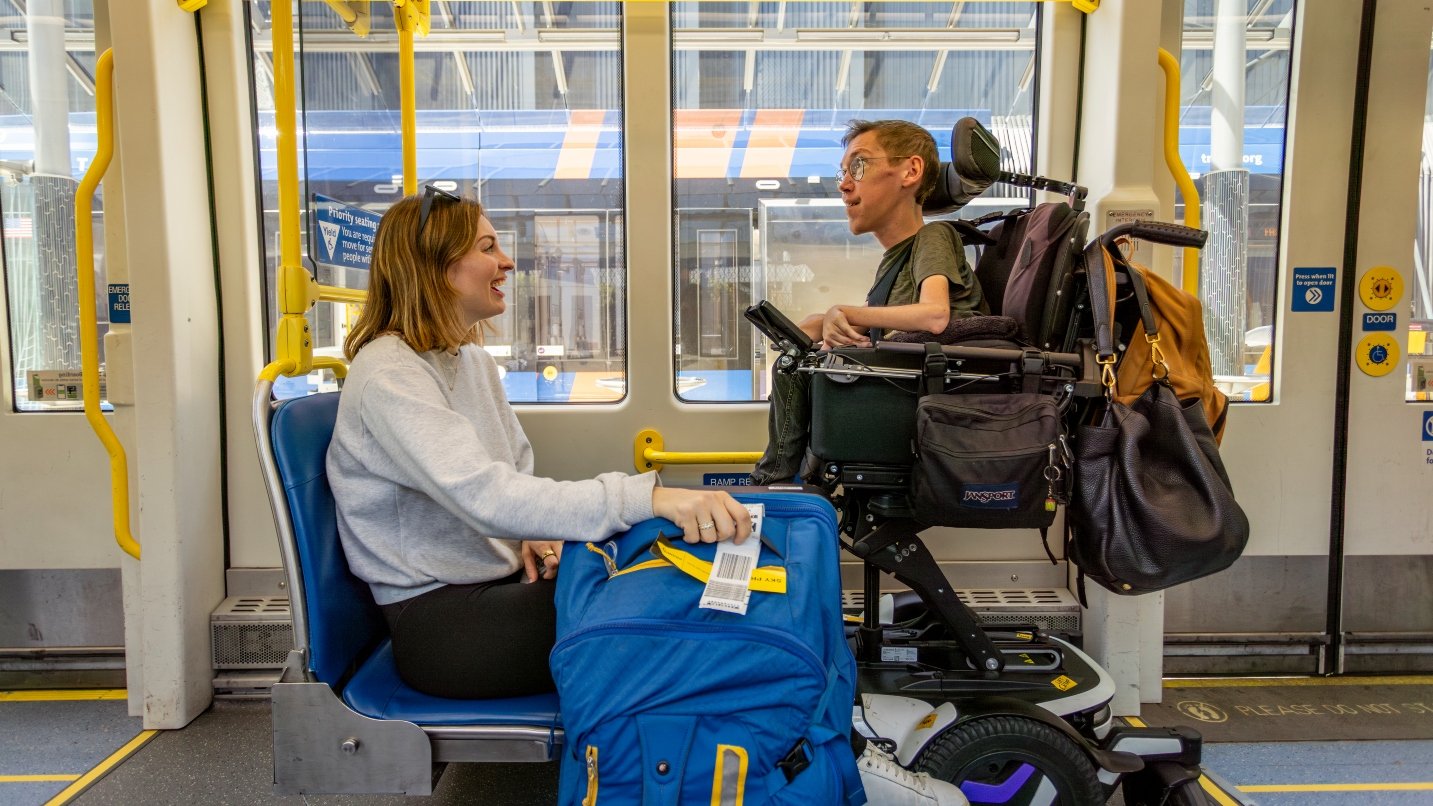
Accessible Travel in and out of Portland:
Most visitors fly into Oregon via the Portland International Airport, or PDX for short. Flying to Portland with a mobility device can be smooth with preparation, including signing up for TSA Cares or referencing your airline’s accessibility page. The airport has a wide range of accessibility features, including a sensory room located near gate D10. Any ticket counter can offer a sunflower lanyard as part of the Hidden Disabilities project or contact the Autism Society of Oregon at least two weeks prior to departure.
Before you leave the airport be sure to stop at the PDX Welcome Center, on the baggage claim level. It’s one of Oregon’s eight staffed Welcome Centers, and a great place to pick up free maps and brochures as well as personal recommendations and insider tips on local attractions, activities and events.
Once here, TriMet — Portland’s award-winning public transportation system — makes ground transportation a breeze. All MAX trains, streetcars and buses are wheelchair-accessible and have Braille signage and detectable warning tiles (the bumpy floor tiles that help designate places you need to pay attention). Stops are automatically announced. On the trains, no wheelchair securement is necessary — just pop the brake and enjoy the ride.
You can also hail a wheelchair-accessible taxi, Uber or Lyft. In addition to requesting wheelchair-accessible vehicles through the apps, the city of Portland hosts PDX WAV, a year-round, 24/7 service to connect riders with vehicles and trained drivers on demand.

If You Go
Need a list of accessible locations in this itinerary?
International Rose Test Garden
Portland International Airport
For more accessible itineraries in Oregon, visit our main accessibility page.



